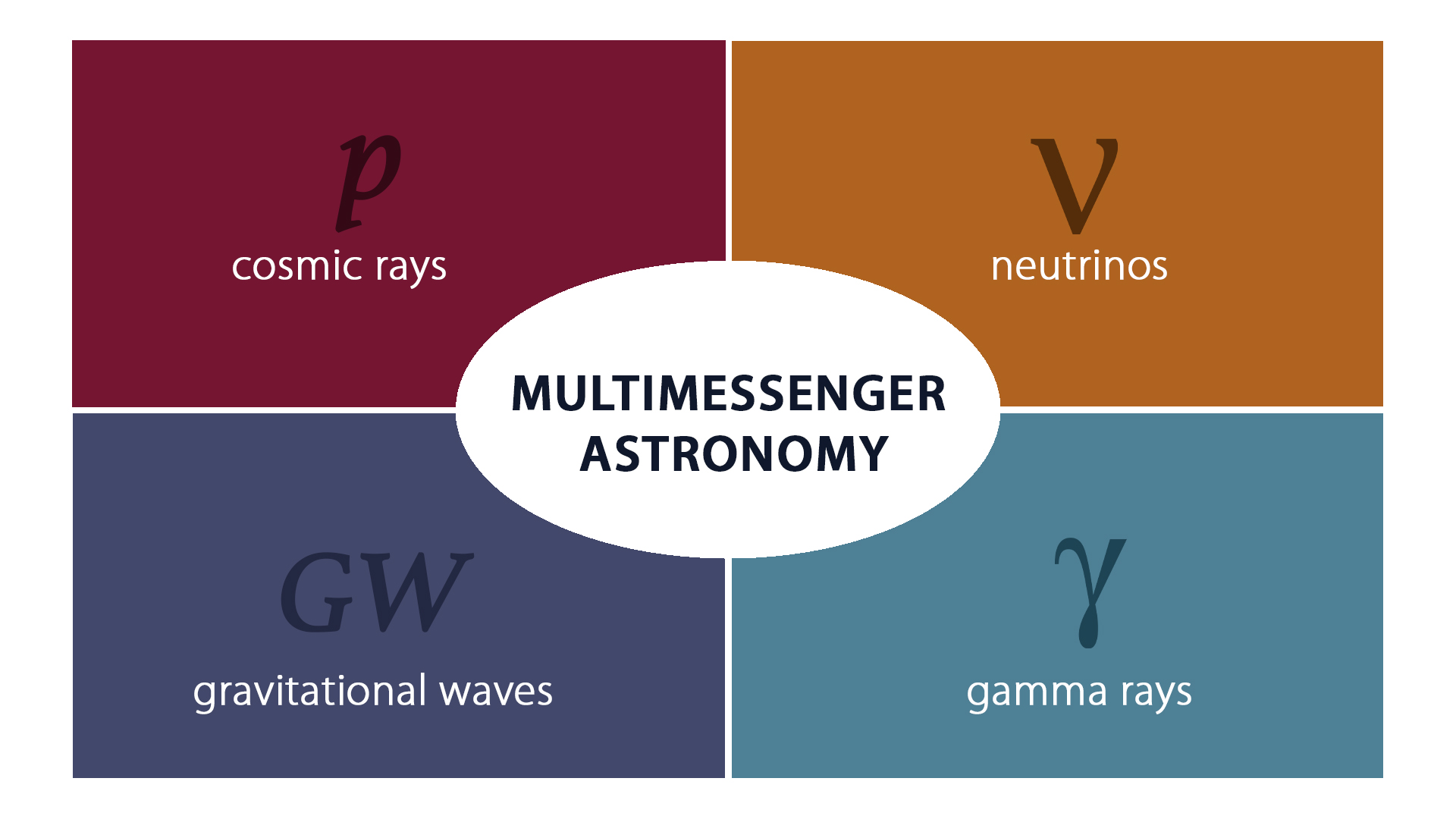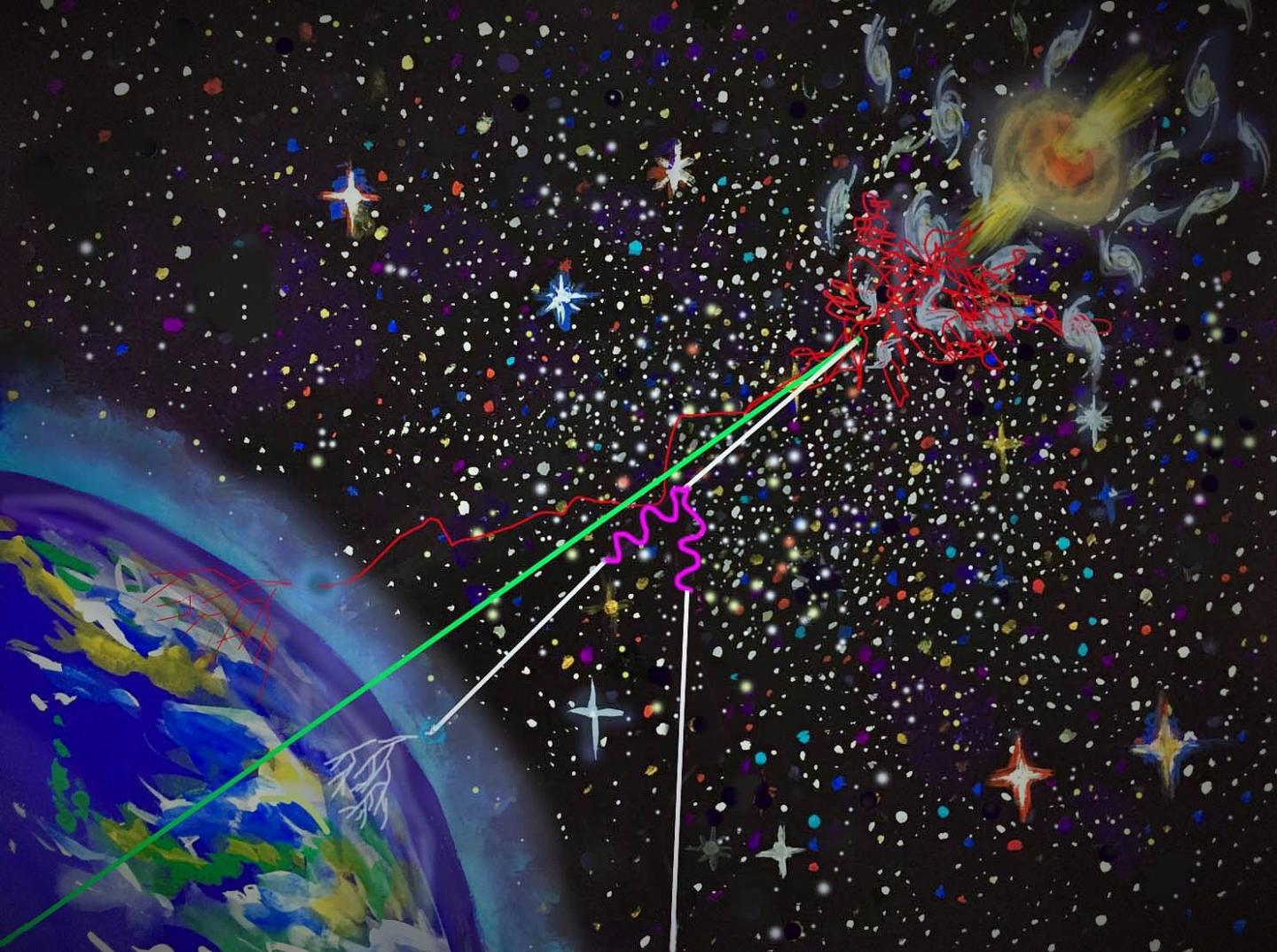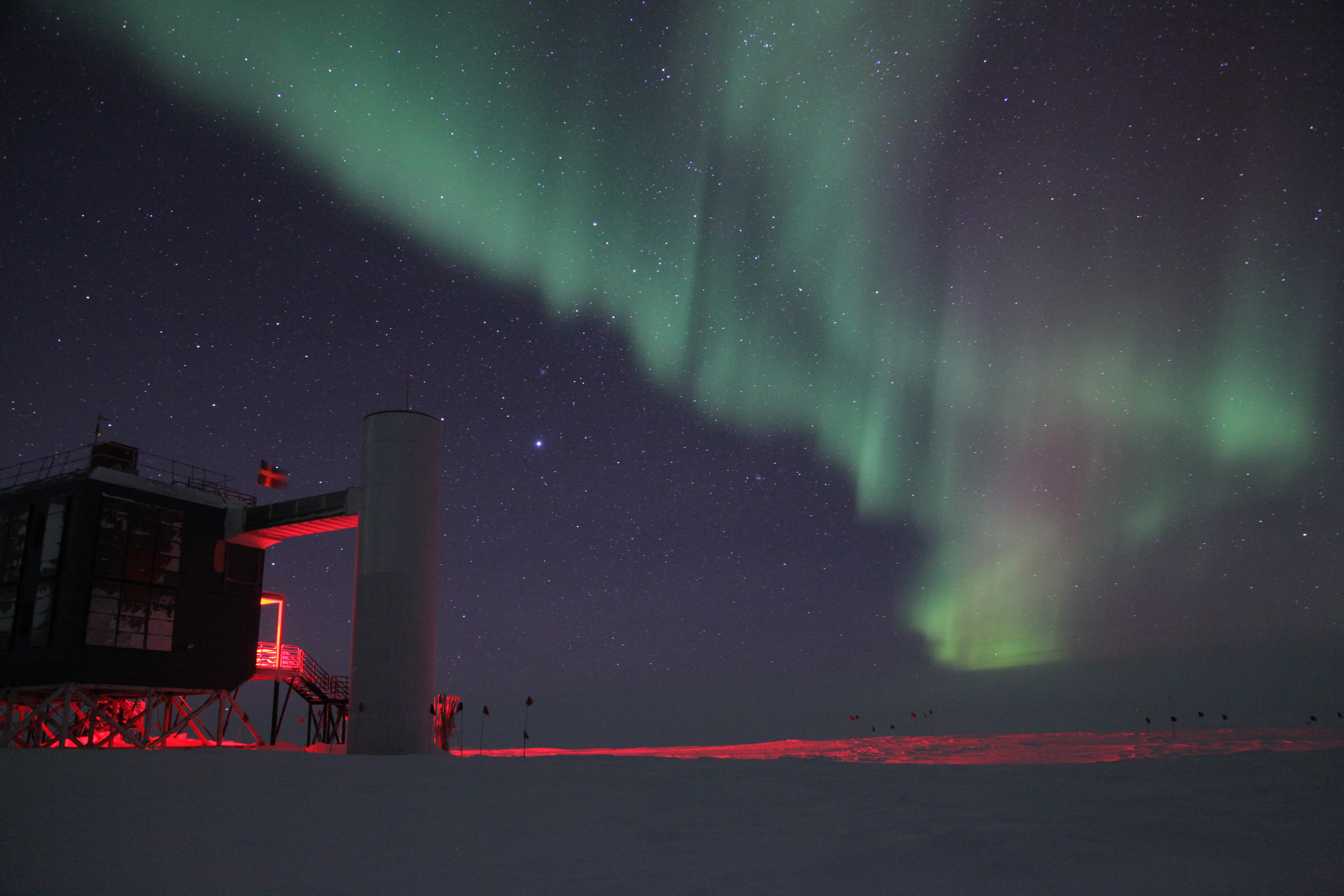Tracing a Neutrino to Its Source: The Discovery in Pictures
Blazar Blasting Neutrinos
A blazar accelerates protons (the yellow p) to the energy levels of cosmic rays, initiating a complex quantum cascade that also releases gamma rays (magenta) and neutrinos (blue), which follow straight paths through space. The coupled detection of these two particles enabled astronomers to identify the blazar as a source of cosmic rays.
Fermi Gamma-ray Visualization
Fermi-detected gamma rays from the blazar TXS 0506+056 are shown as circles in this visualization. The circles’ size and color—from white (low) to magenta (high)— indicate the energy of each ray.
Multimessenger Astronomy
Multimessenger astronomy involves synthesizing information from multiple sources. Astronomers can currently gather data from these four messengers. Here, gamma rays stand in for the entire electromagnetic spectrum, which spans radio waves, through optical light, to gamma rays.
Multimessenger emission art
This artist's image reveals the "multimessenger" emission. As cosmic rays are accelerated by a supermassive black hole, the high-energy rays escaping are trapped in the environment around it. The high-energy neutrinos and gamma-rays are produced in the magnetized environment during their confinement and intergalactic space as they move through it. The three particles eventually reach Earth, where they can provide a unified picture.
Members of the IceCube Collaboration
Members of the IceCube Collaboration before the deployment of the last DOM, installed on December 18, 2010.
Aurora Australis over South Pole
The aurora australis shines above NSF's IceCube Neutrino Observatory at NSF's Amundsen-Scott South Pole Station.
Breaking space news, the latest updates on rocket launches, skywatching events and more!

Space.com is the premier source of space exploration, innovation and astronomy news, chronicling (and celebrating) humanity's ongoing expansion across the final frontier. Originally founded in 1999, Space.com is, and always has been, the passion of writers and editors who are space fans and also trained journalists. Our current news team consists of Editor-in-Chief Tariq Malik; Editor Hanneke Weitering, Senior Space Writer Mike Wall; Senior Writer Meghan Bartels; Senior Writer Chelsea Gohd, Senior Writer Tereza Pultarova and Staff Writer Alexander Cox, focusing on e-commerce. Senior Producer Steve Spaleta oversees our space videos, with Diana Whitcroft as our Social Media Editor.






